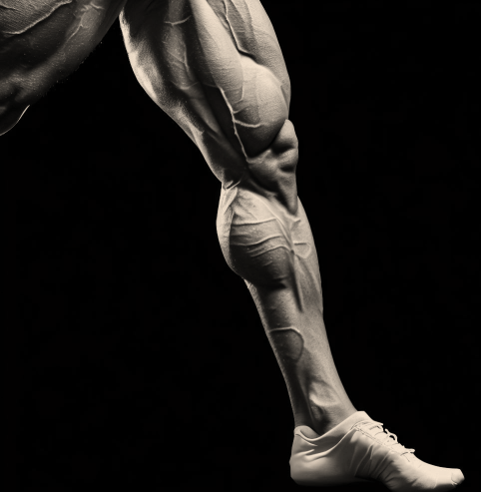- Introduction
- Which Major Muscle Group Do Leg Extensions Strengthen?
- The Anatomy of the Quadriceps
- Benefits of Strengthening the Quadriceps
- Common Mistakes During Leg Extensions
- Incorporating Leg Extensions into Your Routine
- The Role of Supporting Muscles
- The Science Behind Muscle Strengthening
- FAQs
- Conclusion
Introduction
Leg extensions, a staple in many fitness routines, have been the talk of the town for fitness enthusiasts and professionals alike. But what’s all the buzz about? Which major muscle group do leg extensions strengthen? Let’s embark on a journey to uncover the mysteries of this popular exercise and its profound impact on our muscles.
Which Major Muscle Group Do Leg Extensions Strengthen?
Leg extensions primarily target the quadriceps. The quadriceps, often referred to as “quads,” are a group of four muscles located at the front of the thigh. These muscles play a pivotal role in activities like walking, running, and jumping. By strengthening the quads, leg extensions enhance our overall leg strength and stability.
The Anatomy of the Quadriceps
The quadriceps consist of four individual muscles:
- Rectus femoris
- Vastus lateralis
- Vastus medialis
- Vastus intermedius
Each of these muscles has its unique function, but collectively, they work in harmony to extend the knee and provide stability.
Benefits of Strengthening the Quadriceps
Strengthening the quads through leg extensions can offer a plethora of benefits:
- Improved athletic performance
- Enhanced stability and balance
- Reduced risk of knee injuries
- Better posture and alignment
Common Mistakes During Leg Extensions
While leg extensions are beneficial, it’s crucial to perform them correctly. Some common mistakes include:
- Using excessive weight
- Not maintaining a proper range of motion
- Neglecting to engage the core
Incorporating Leg Extensions into Your Routine
If you’re keen on adding leg extensions to your workout, start slow. Begin with lighter weights and focus on your form. As you become more comfortable, you can gradually increase the weight and repetitions.
The Role of Supporting Muscles
While the quads are the primary target, leg extensions also engage several supporting muscles. These include:
- Hamstrings
- Calves
- Glutes
Engaging these muscles ensures a balanced workout and reduces the risk of muscle imbalances.
Hamstrings: The Unsung Heroes
Located at the back of the thigh, hamstrings play a vital role in bending the knee and extending the hip. They work in tandem with the quads to provide stability and power.
Calves: The Pillars of Strength
The calves, comprising the gastrocnemius and soleus muscles, are essential for pushing off the ground and maintaining balance.
Glutes: The Powerhouse
The glutes, or buttock muscles, assist in hip extension and provide stability during leg extensions.
The Science Behind Muscle Strengthening
Muscle strengthening isn’t just about lifting weights. It involves a complex interplay of muscle fibers, neural connections, and blood flow.
The Role of Muscle Fibers
When we engage in strength training exercises like leg extensions, we create microscopic tears in our muscle fibers. As these tears repair, our muscles grow stronger.
Neural Connections and Muscle Memory
Repeatedly performing an exercise enhances the neural connections between the brain and muscles. This phenomenon, known as muscle memory, allows us to execute movements more efficiently over time.
Importance of Blood Flow
Proper blood flow is crucial for delivering nutrients to the muscles and aiding in recovery. Exercises like leg extensions promote increased blood circulation, ensuring healthier and stronger muscles.
FAQs
- How often should I perform leg extensions?
It’s recommended to incorporate leg extensions 2-3 times a week, allowing ample recovery time between sessions. - Can leg extensions cause knee pain?
If performed incorrectly or with excessive weight, leg extensions can strain the knees. It’s essential to maintain proper form and listen to your body. - Are there alternatives to leg extensions?
Yes, exercises like squats, lunges, and leg presses are excellent alternatives that also target the quadriceps. - Do I need special equipment for leg extensions?
While many gyms have leg extension machines, you can also perform them at home using resistance bands. - Is it essential to stretch before doing leg extensions?
Absolutely! Stretching warms up the muscles and reduces the risk of injuries. - Can beginners do leg extensions?
Yes, beginners can start with lighter weights or resistance and focus on mastering the form.
Conclusion
Leg extensions are a powerful exercise that primarily targets the quadriceps but also engages several supporting muscles. By understanding the anatomy and science behind muscle strengthening, we can harness the full potential of leg extensions. Whether you’re a seasoned athlete or a fitness newbie, incorporating leg extensions into your routine can pave the way for stronger legs and a healthier you.
Check out the other articles to find out all you need about leg muscle exercises.
